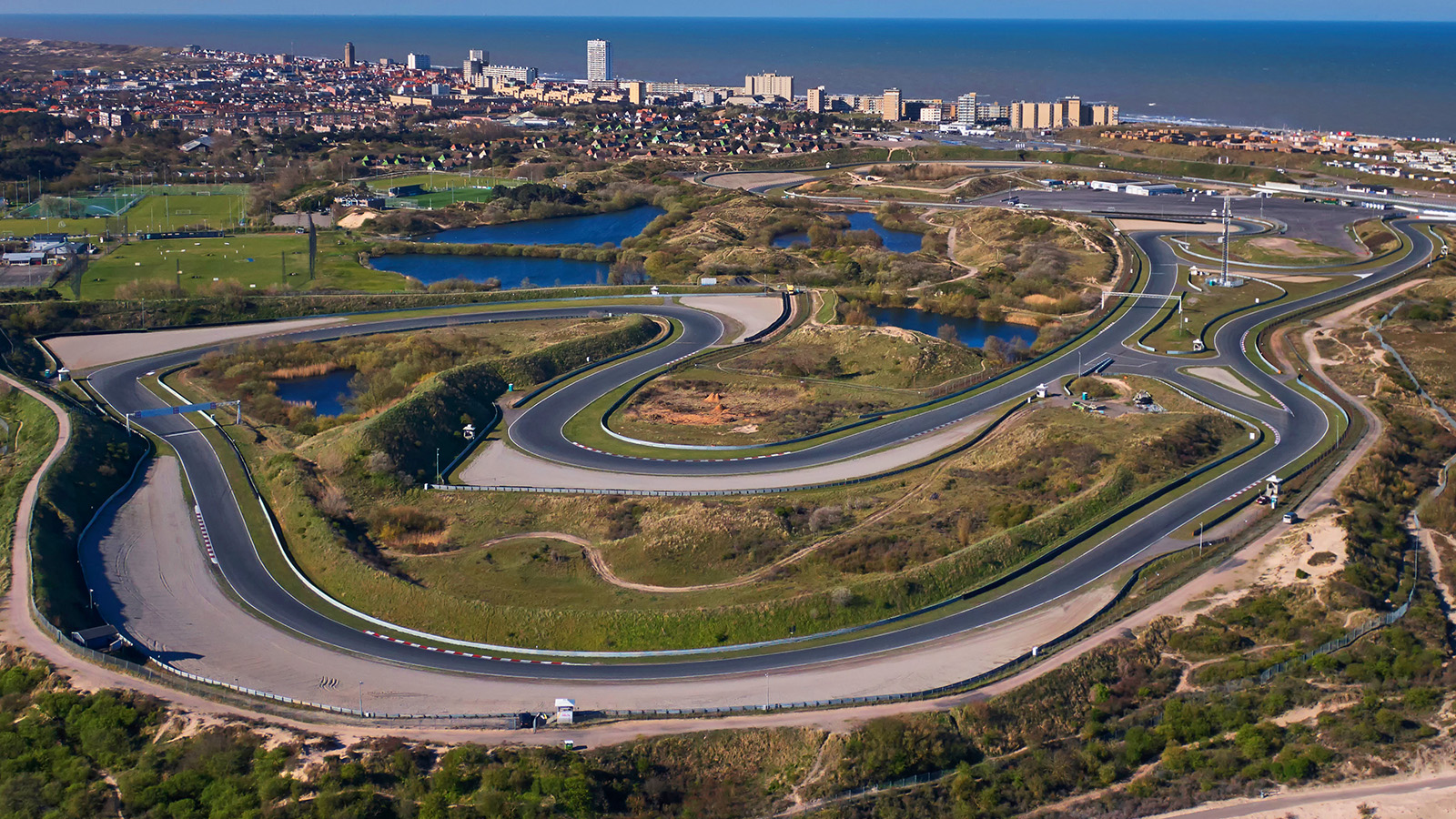The Circuit Zandvoort, nestled in the picturesque Netherlands, is a historic gem in the motorsport world. Known for its location amid the dunes and the North Sea, Zandvoort has been an iconic destination for racing enthusiasts since its opening in 1948. In this blog, we will delve deep into the unique characteristics of this circuit, its evolution over the years, and its significance in the rapidly growing single-seater category, Eurocup-3.
History of Circuit Zandvoort
The Circuit Zandvoort, officially known as CM.com Circuit Zandvoort, opened in 1948 and quickly became a favourite in the European racing calendar. From its inception, it has hosted a variety of motorsport events, including the Dutch Grand Prix of Formula 1. Its original design, influenced by Dutch drivers and the natural conditions of the surroundings, has remained true to its essence over the decades.
Evolution and renovations
Over the years, Zandvoort has undergone several renovations to meet the demands of modern competition and enhance safety. The most significant modifications occurred in 2020, when the circuit prepared for the return of Formula 1 after more than three decades. These improvements included changes to the Tarzanbocht corner, one of the most iconic, and the addition of a banked section at Hugenholtz corner, increasing the challenge for both drivers and engineers.
Design and features of the circuit
Zandvoort is renowned for its flowing and challenging design, with a length of 4.259 km and a total of 14 corners. Its location in the coastal dunes adds a unique element, with natural elevation changes that test drivers’ skills and vehicle setup. Below, we break down some of the circuit’s most notable features.
Tarzanbocht corner
The Tarzanbocht is perhaps the most famous corner at Zandvoort. It is a 180-degree bend right after the main straight, requiring strong and precise braking. Its wide radius allows multiple racing lines, favouring overtaking and creating exciting opportunities for Eurocup-3 drivers.
The dunes section
The dunes section, with its natural undulations, offers a unique challenge. Here, drivers must deal with elevation changes and blind corners, testing both their skill and bravery. This part of the circuit is crucial for maintaining rhythm and securing a good lap time.
Hugenholtz corner
The Hugenholtz corner, redesigned with banking in 2020, has become a favourite among drivers. The banking increases corner speed, allowing earlier acceleration on exit. This feature is particularly relevant in categories like Eurocup-3, where exit speed can be the difference between gaining and losing positions.
Scheivlak corner
Another iconic corner is Scheivlak, a fast and blind bend that descends sharply. This corner is a true test for drivers, who must rely on memory and skill to navigate it at high speed without seeing the exit. It is a corner that rewards precision and confidence.
Impact of weather and location
The circuit’s proximity to the North Sea means weather conditions can change rapidly. Wind and sand can alter track grip, and rain can completely transform racing conditions. Eurocup-3 drivers must be prepared to adapt quickly to these changes, adding an additional level of complexity to races at Zandvoort.
Preparation and strategy
Preparation for a race at Zandvoort involves meticulous attention to detail. Teams must account for the variability of the weather and adjust their tyre strategies accordingly. Aerodynamic setups also play a crucial role, as balancing straight-line speed and corner grip is essential.
Eurocup-3 at Zandvoort
Eurocup-3, a rapidly growing single-seater category, has found an ideal stage in Zandvoort to showcase the talent of its drivers and the competitiveness of its cars. This circuit not only offers a technical challenge but also a platform for young drivers to display their skill in a demanding environment.
Competition and driver development
Zandvoort is a circuit that tests all aspects of a driver’s abilities. Eurocup-3, with its focus on developing young talent, benefits greatly from the unique characteristics of this track. Drivers learn to handle elevation changes, execute overtakes in complex corners, and quickly adapt to changing conditions, skills that are essential for their progress in motorsport.
Events and fans
Eurocup-3 events at Zandvoort attract a crowd of enthusiastic fans. The circuit’s proximity to Amsterdam and other major cities makes it an accessible destination for motorsport followers. Additionally, the seaside and dune atmosphere offers a unique experience for both spectators and participants.
Conclusion
The Circuit Zandvoort, with its unique features and rich history, is a perfect stage for Eurocup-3. Its challenging design, natural influences, and unpredictable weather make it a true test for drivers and teams. At the same time, its ability to attract fans from all over underscores its importance in the racing calendar.
For Eurocup-3 drivers, competing at Zandvoort is an opportunity to hone their skills at one of the world’s most iconic circuits. And for fans, it is a chance to witness emerging talent up close and enjoy thrilling races in a spectacular setting.
If you want to keep up with all the latest news and results from Eurocup-3 at Zandvoort, be sure to visit our website and stay updated with the latest news and updates. Don’t miss any action at this legendary circuit!
















